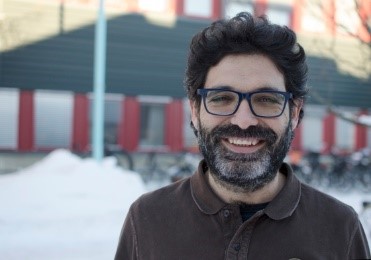Composite nanomaterials for high-efficiency solar cells and solar fuels
报 告 人:Prof. Alberto Vomiero 瑞士吕勒奥理工大学
报告时间:2017年8月30日(星期三)9:40-10:30
报告地点:308会议室
主 办:无机功能材料课题组
报告人简介: Alberto Vomiero is chair professor in Experimental Physics at the Luleå University of Technology, Sweden. He was awarded his PhD in Electronic Engineering from the University of Trento in 2003 and his Degree in Physics from the University of Padova in 1999. His main research interests are in composite nanomaterials (wide bandgap semiconductors, semiconducting nanocrystals and hybrid systems) for gas sensors, excitonic solar cells and solar fuels. He has published more than 130 peer reviewed papers in international Journals and 3 book chapters. He is former Marie Curie international outgoing fellow of the European Commission, fellow of the Institute of Physics (UK), of the Royal Society of Chemistry (UK), and of the Institute of Nanotechnology (UK), former chair of the Italian section of the American Nano Society and member of the Global Young Academy. He is associate editor of Nano Energy (Elsevier) and editorial board member of Scientific Reports (Nature Publishing Group).
Alberto Vomiero is chair professor in Experimental Physics at the Luleå University of Technology, Sweden. He was awarded his PhD in Electronic Engineering from the University of Trento in 2003 and his Degree in Physics from the University of Padova in 1999. His main research interests are in composite nanomaterials (wide bandgap semiconductors, semiconducting nanocrystals and hybrid systems) for gas sensors, excitonic solar cells and solar fuels. He has published more than 130 peer reviewed papers in international Journals and 3 book chapters. He is former Marie Curie international outgoing fellow of the European Commission, fellow of the Institute of Physics (UK), of the Royal Society of Chemistry (UK), and of the Institute of Nanotechnology (UK), former chair of the Italian section of the American Nano Society and member of the Global Young Academy. He is associate editor of Nano Energy (Elsevier) and editorial board member of Scientific Reports (Nature Publishing Group).
报告简介:
The typical photoanode in excitonic solar cells and for production of solar fuels is composed of a wide band gap semiconductor, which acts as electron transporter for the photoelectrochemical system, sensitized by a dye molecule or a semiconducting nanocrystal to absorb light. Anatase TiO2 nanoparticles are one of the most used oxides and are able to deliver the highest photoconversion efficiency in this kind of solar cells, but intense research in the last years was also addressed to ZnO and other composite systems. Simultaneous modulation of the composition and shape of nanostructure oxides and light harvesters is key element to tailor the physical chemical processes regulating charge dynamics and, ultimately, to boost the efficiency of the end user device, by favouring charge transport and collection, while reducing charge recombination.
We investigated light harvesting, exaction separation and charge injection and transport in several systems: (I) TiO2 nanoparticles/ZnO nanowires; (ii) Multiwall carbon nanotubes (MWCNTs)/TiO2 nanoparticles; (iii) TiO2 nanotubes; (iv) Hierarchically self-assembled ZnO sub-microstructures. Both dye molecules and semiconducting quantum dots were applied as light harvesters. Possible tailoring of structure and morphology of the photoanodes and of the quantum dots, and their implication in improving the functional properties of these kinds of devices will be discussed in detail.
附件下载: